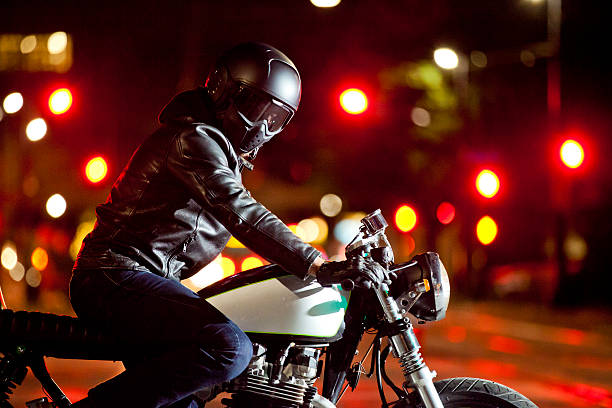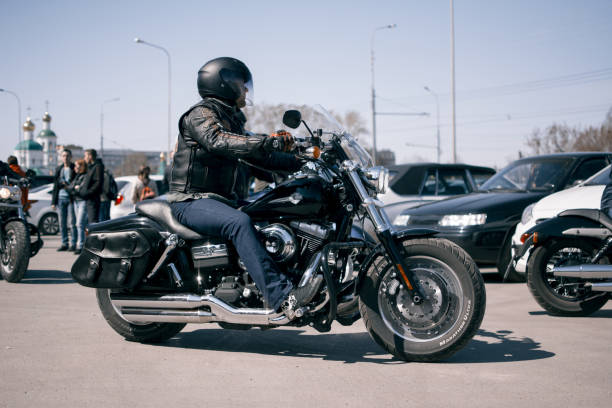Bulletproof Leather Motorcycle Vest Technology
The bulletproof leather motorcycle vest combines fashion, personal protection, and cutting-edge material science. This specialist clothing for motorcycle fans who value safety and style uses innovative and practical technologies.

These vests defend against impacts and ballistic threats while keeping the style and comfort of leather wear. Manufacturers use high-strength fibers, improved weaving techniques, and unique designs to achieve this.
Bulletproofing material underpins these vests. Leather motorcycle jacket makers employ lighter materials than Kevlar, which are used in bulletproof vests. Ultra-high-molecular-weight polyethylene (UHMWPE) is famous for its strength-to-weight ratio. This fiber may absorb and spread bullet or blunt force energy when woven into sheets, minimizing penetration and trauma.
However, adding these protective layers to leather is difficult. Leather is natural and varied; thus, it must be treated carefully to maintain the vest’s ballistic qualities. Advanced tanning procedures make leather more robust and tear-resistant while maintaining flexibility and breathability. This procedure also prevents leather from degrading ballistic fibers.
The effectiveness of bulletproof leather motorcycle vests depends on their design. The vest must be ergonomically designed to give motorbike riders a full range of motion. Ballistic panels must be strategically placed to protect crucial regions, enabling ventilation and flexibility. Overlapping panels or articulated joints improve mobility without sacrificing protection.
Ventilation is also crucial. Motorcycle riding, especially in warm weather, is strenuous. Manufacturers use breathable linings and ventilation systems to let air circulate without damaging ballistic panels.
Technology in these vests allows for additional safety features. Some vests have spine protectors or shock-absorbing cushion pockets. These modifications increase the vest’s safety in a fall or collision.
Durability matters, too. Bulletproof leather motorcycle vests are investments. Therefore, riders expect them to endure threats and daily use. To do this, makers carefully create these vests. Reinforced stitching, especially in high-stress places, and corrosion-resistant fasteners keep the vest sturdy.
These vests provide physical protection and visible technology. Reflective materials and low-profile LED lights can make the rider more apparent to other road users in low light.
The aesthetics of bulletproof leather motorcycle vests are important. Safety is essential, but appearance sells. Manufacturers offer classic and contemporary designs so riders don’t have to sacrifice flair for safety. Individual preferences are met by color, pattern, and custom-fit possibilities.
The technology underlying bulletproof leather motorcycle vests is being developed. When new materials and manufacturing methods are developed, these vests improve rider protection, comfort, and style. Combining traditional artistry and cutting-edge technology improves motorcycle safety and pushes protective garment limits.
Finally, bulletproof leather motorcycle vests demonstrate material science and protective gear design advances. They represent the spirit of innovation that drives fashion and technology by offering motorcycle riders a unique combination of flair, comfort, and safety.

Traditional vs. Bulletproof Leather Motorcycle Vests
The bulletproof leather motorcycle vest is a modern marvel in motorcycle clothing. This comparison examines the differences between these two vests, including their physical traits, philosophies, and functions.
The classic leather motorcycle vest is more than just apparel for bikers a culturally and historically significant symbol. High-quality leather vests are durable, comfortable, and traditional. They let bikers express themselves with patches and club colors.
The bulletproof leather motorcycle vest is a recent safety and material science invention. It looks like leather but has superior protective materials to protect the wearer from ballistic threats and physical blows. This style-safety combination meets riders’ changing needs for protection without sacrificing the biker’s appearance.
Quality leather and craftsmanship are used to make classic leather vests. Thicker leather protects against abrasion and the elements. Comfort and style are its main functions, not safety. Vests with many pockets, side laces for adjustment, and a soft inner lining are standard.
However, bulletproof jackets are technical marvels. They use ballistic-resistant Kevlar or Dyneema layers. These layers are meticulously incorporated into leather without altering its drape or flexibility. The vest looks like a leather vest but provides more protection.
Another difference is vest weight and flexibility. Traditional leather vests are lightweight and flexible, making them ideal for riding. Despite lightweight material advances, bulletproof jackets still need to be more flexible. This extra weight and rigidity might cause long-term rider fatigue.
The vests’ functions and purposes vary greatly. Biker identity typically includes traditional vests as symbols of independence, revolt, or group affiliation. They provide warmth and storage, but they need to be more safety-focused.
However, bulletproof jackets prioritize safety. They’re for motorcyclists who value safety, maybe due to their rides or personal safety. The vests’ protective panels absorb and disperse impacts and ballistic threats, providing peace of mind in diverse riding circumstances.
These vests also differ in comfort and fit. Traditional leather vests are comfortable and conform to the wearer. They fit differently due to changeable sides and sizes. Bulletproof vests are improving, but their protective panels make them more rigid and more challenging to fit.
Traditional leather vests are attractive. Each vest is unique due to its patina, wear patterns, and capacity to be personalized with patches and paint. While identical in appearance, bulletproof vests cannot be personalized due to protective material integrity.
Vest maintenance and care vary. Regular conditioning keeps traditional leather vests flexible and prevents cracking. Simple repairs and changes are possible. Bulletproof vests must be handled carefully since poor storage or maintenance can destroy ballistic materials. Since the protective materials degrade over time, they must be replaced regularly.
Traditional leather jackets cost less than bulletproof ones. Bulletproof vests cost more due to their superior materials and complicated production. Price can be an issue for many riders selecting between the two.
In conclusion, traditional and bulletproof leather motorcycle vests share a heritage in biker culture but serve different objectives and meet different riding needs. The bulletproof vest is a practical reaction to modern riding, while the old vest embodies biker culture. Both have pros and cons in motorcycle gear, each with its cultural importance.

We should also evaluate the environmental impact of these garments. Leather vests are robust, but their manufacture raises ethical and environmental concerns. If not handled properly, tanning can harm the environment. Synthetic materials used to make bulletproof vests have ecological impacts, including energy use and non-biodegradable trash.
Traditional or bulletproof leather motorcycle vests depend on personal choices and priorities. Some value the traditional vest’s cultural significance and aesthetic appeal, demonstrating a solid connection to the biker community and its traditions. Some riders prefer bulletproof vests for their safety-first riding style. This pick shows a rider’s lifestyle, ideals, and gear statement.
As motorcycle clothing improves, traditional and bulletproof vests may see further improvements. Future innovations may combine the rich heritage of leather vests with bulletproof vests’ superior protective technologies. The best of both worlds would give motorcyclists a choice without compromising style or safety.






Leave a Reply